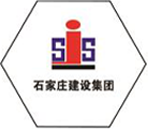
8 月 . 09, 2024 06:40
Back to list
Understanding the Importance and Functionality of Safety Relief Valves in Industrial Applications
Understanding Safety Relief Valves Essential Components for Pressure Regulation
In various industrial processes, maintaining safety and efficiency is of paramount importance. One critical component that plays a crucial role in this aspect is the safety relief valve (SRV). These valves are designed to protect equipment and personnel from the dangers associated with overpressure situations, making them indispensable in various applications, including chemical manufacturing, oil and gas, and power generation.
What is a Safety Relief Valve?
A safety relief valve is a device that automatically releases pressure from a system when it exceeds a predetermined set point. The primary function of an SRV is to prevent catastrophic failures resulting from overpressure, ensuring the safe operation of equipment such as boilers, pressure vessels, and pipelines. These valves are engineered to open at a specific pressure and close once normal operating conditions are restored, thereby maintaining a safe environment.
Types of Safety Relief Valves
There are two main types of safety relief valves spring-loaded and pilot-operated valves.
1. Spring-Loaded Safety Relief Valves These are the most common type of SRVs. They utilize a spring mechanism to hold the valve closed until the internal pressure exceeds the set point. When the pressure is reached, the spring compresses, allowing the valve to open and release the excess pressure. Once the pressure decreases, the spring forces the valve to close again.
2. Pilot-Operated Safety Relief Valves These valves are more complex and are often used in applications with larger capacity requirements. They use a smaller pilot valve that controls a larger main valve. The pilot valve operates based on the upstream pressure, and when the set point is exceeded, it opens the larger valve to release the pressure. This design allows for better performance and more precise control.
safety relief valve

Importance of Safety Relief Valves
The importance of safety relief valves cannot be overstated. They are essential in preventing accidents such as explosions, equipment failures, and hazardous leaks. In industries where high-pressure systems are prevalent, the absence of a functioning safety relief valve can lead to severe accidents, resulting in property damage, environmental harm, and, most importantly, injury or loss of life.
Moreover, safety relief valves are not just regulatory requirements; they are also a matter of operational integrity. Regular maintenance and testing of these valves are crucial to ensure they function correctly when needed. Compliance with standards such as ASME (American Society of Mechanical Engineers) guidelines is mandatory, and industries must adhere to rigorous testing protocols to guarantee safety.
The Future of Safety Relief Valves
As technology advances, the design and functionality of safety relief valves continue to evolve. Innovations such as smart valves equipped with IoT (Internet of Things) capabilities are emerging, enabling real-time monitoring of valve performance and system pressure. These developments aim to enhance operational efficiency, reduce maintenance costs, and further improve safety outcomes.
In addition, the push for greener technologies in various industrial sectors is leading to the development of more sustainable materials and designs for safety relief valves. As industries strive for environmental responsibility, the integration of eco-friendly practices in the manufacturing and application of these essential safety devices will be crucial.
Conclusion
Safety relief valves are integral to the safe and efficient operation of numerous industrial systems. Their ability to mitigate the risks associated with overpressure makes them vital components in protecting lives, equipment, and the environment. As technology continues to advance, the role of safety relief valves will remain crucial, adapting to meet the evolving challenges of modern industry while upholding the highest safety standards. Ensuring that these valves are properly maintained and monitored is not just a regulatory obligation; it is a commitment to safe industrial practices.
Latest news
-
Unlocking The Quality Gas Pressure ReducersNewsNov.01,2024
-
The Role of Gas Pressure Reducing StationsNewsNov.01,2024
-
The Importance and Functionality of Safety Relief ValvesNewsNov.01,2024
-
The Essential Role of Safety Valves in Natural Gas ApplicationsNewsNov.01,2024
-
The Essential Role of Gas Pressure RegulatorsNewsNov.01,2024
-
Enhance Your Premium Gas FiltersNewsNov.01,2024

